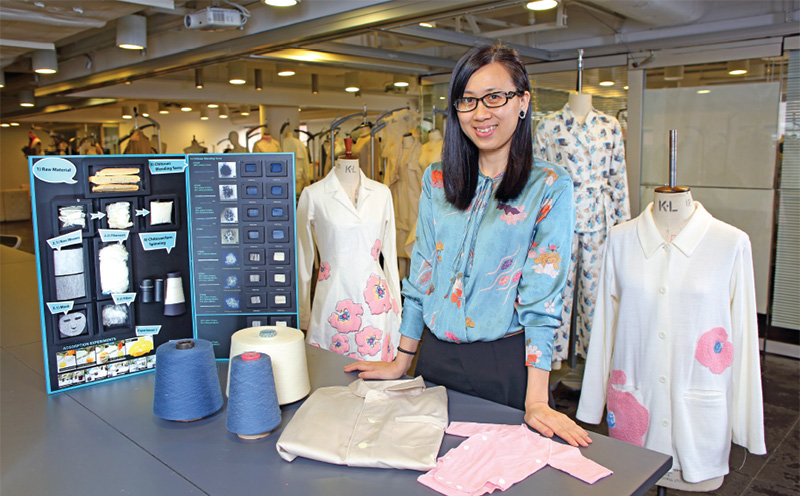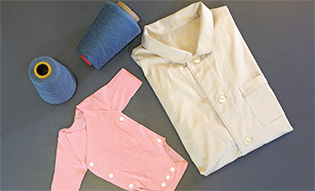
Dr Li Li
A technical breakthrough in the production of chitosan yarn has opened the possibility of creating novel textiles with natural anti-bacterial properties.
Imagine wearing fibre spun from crustacean shells. It seems a little odd, but it could be very beneficial to your health. Chitosan is a natural material derived from extracts of crustaceans such as crabs and shrimps that can be spun and woven to create a soft, breathable and durable material. Most importantly, bacteria cannot survive on it, so it can aid wound healing and skin regeneration. The fibre also remains odour-free even after hours of sweatsoaked use.
Despite this promising scenario, turning chitosan into a usable fibre is a technologically challenging and expensive process. It is processed using wet spinning technology, but the friction between the fibres and the spinning rollers creates static electricity. The fibres repel each other and break easily, which eventually clog the rollers.
To address these problems, Dr Li Li, Associate Professor at the Institute of Clothing, designed a new spinning system using a conductive roller. “When the roller is conductive, any static electricity generated on the fibres will be conducted away”, Dr Li explained, thus reducing both wastage and production cost.
With the new design in hand, the team blended chitosan with textiles such as cotton to combine the advantages of the materials and further reduce the cost. Tests were conducted to characterise both the bio-functional properties, such as antibacterial and wound healing, and the mechanical properties, including softness and strength, of the different blends.
The team then developed a finite element model to simulate the friction and pressure between the fabric surface and human skin to optimise the material. On investigating the wound-healing properties of the resultant materials, they found that while a 100% chitosan fabric allowed virtually no bacterial growth, a cotton-blended fabric containing only 10% chitosan still prevented over 90% of bacteria.
Finally, the team produced a child-friendly dinosaur-printed version of the fabric and tested it on children with epidermolysis bullosa, a rare and painful illness that causes skin blistering which requires frequent dressing. The material is expected to reduce the pain of wound healing in such patients, and offer the possibility of new skin-protective textiles for treating burns.
This innovative spinning system won a Gold Medal at the 44th International Exhibition of Inventions in Geneva during April 2016. ♦

